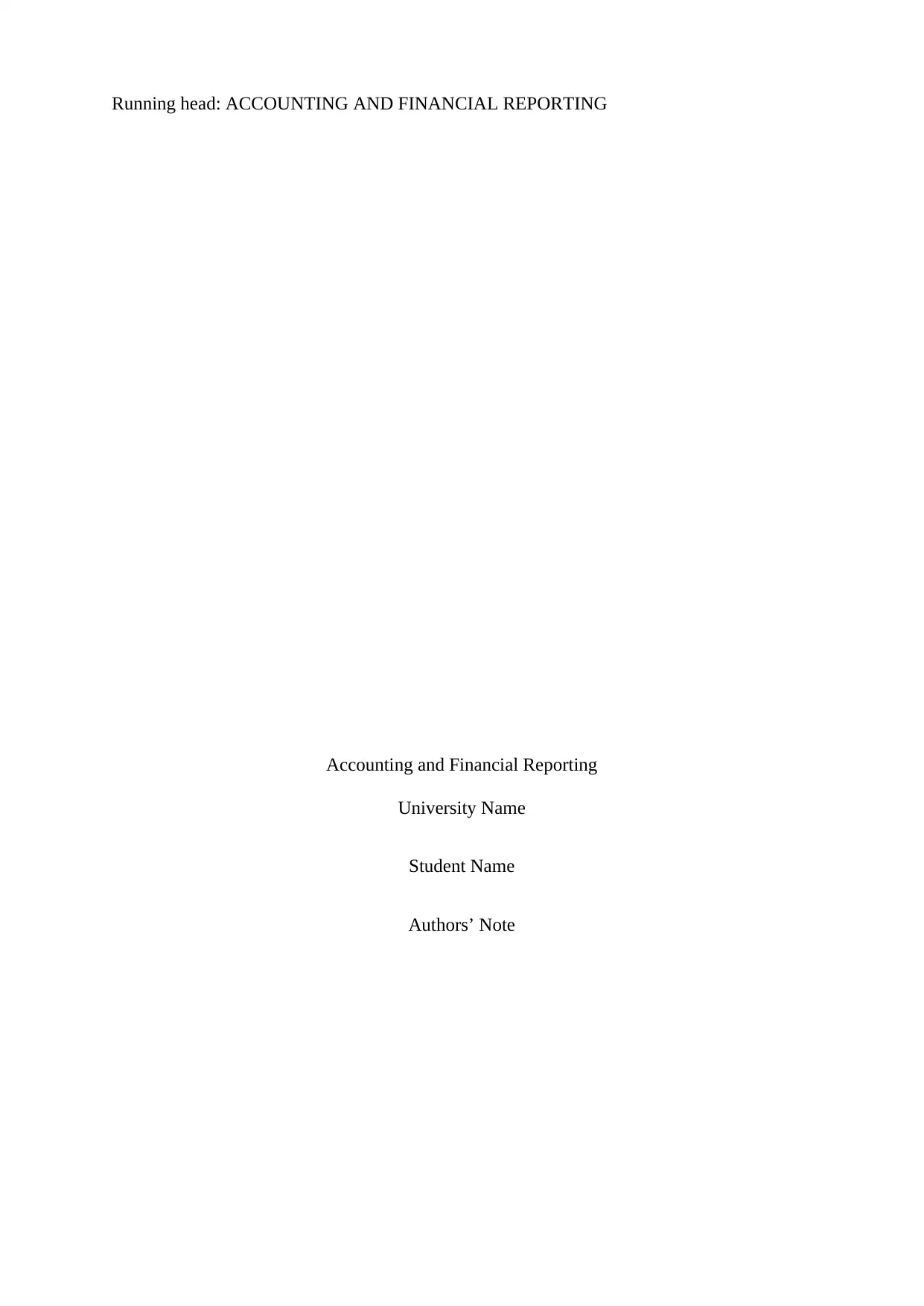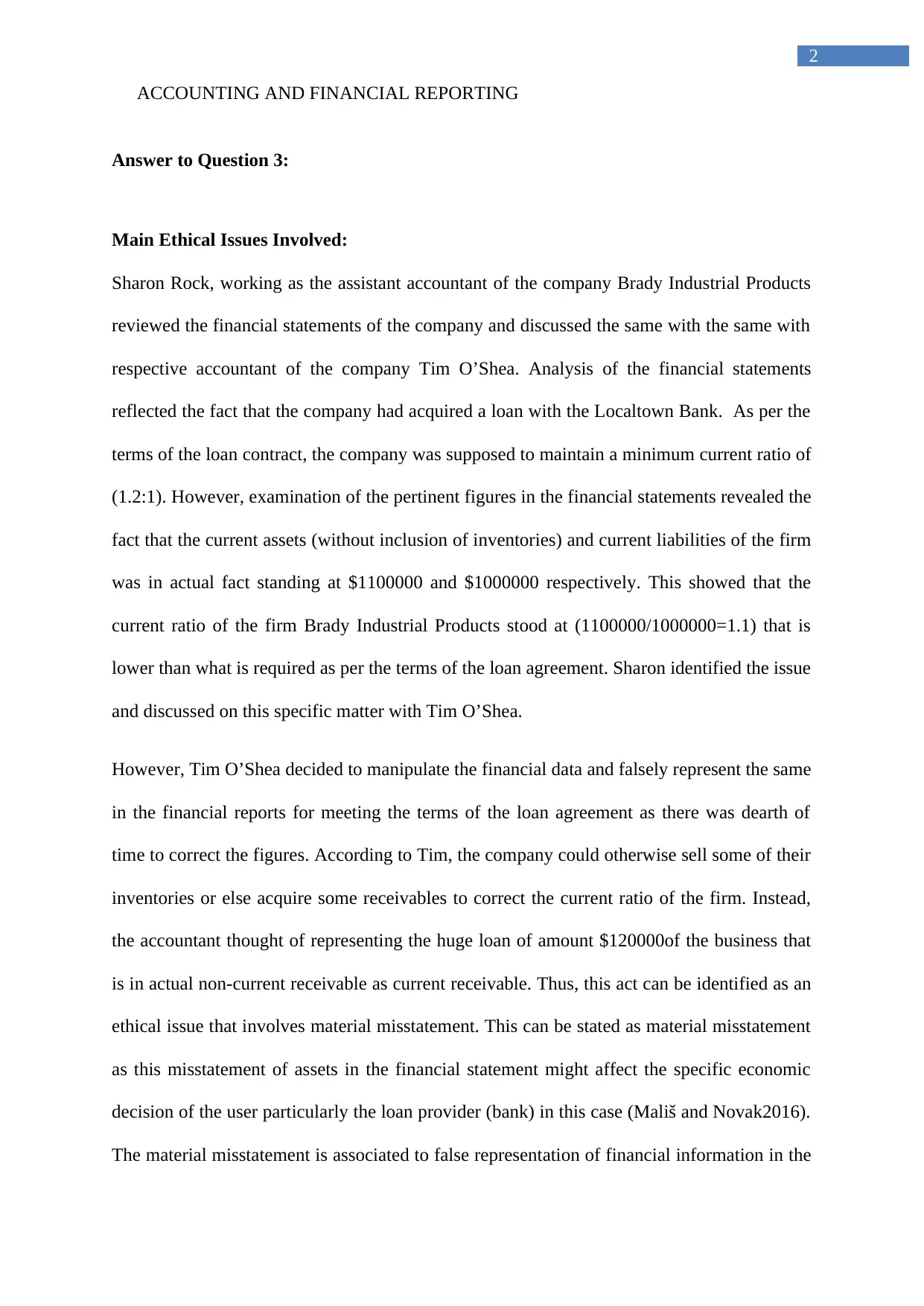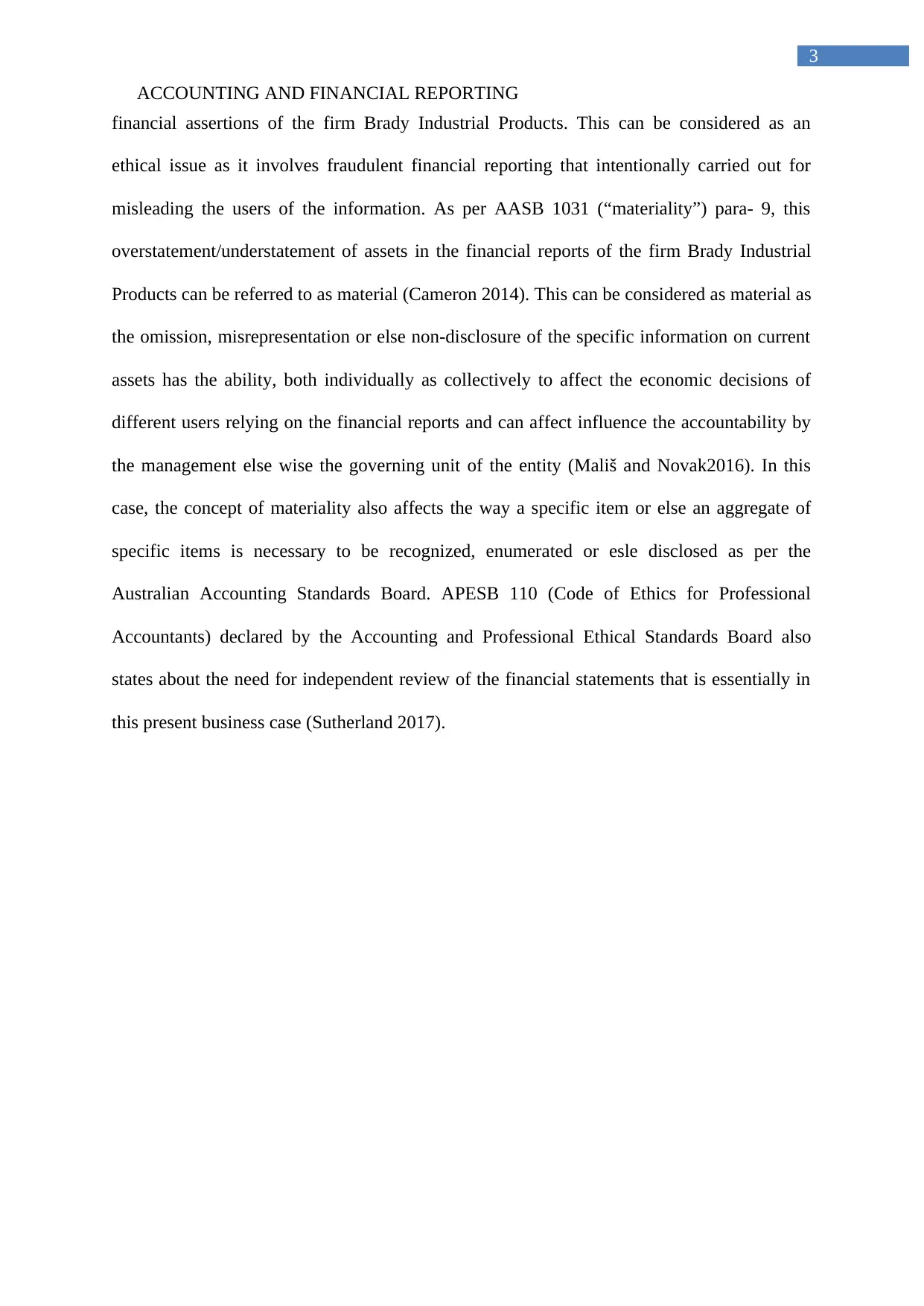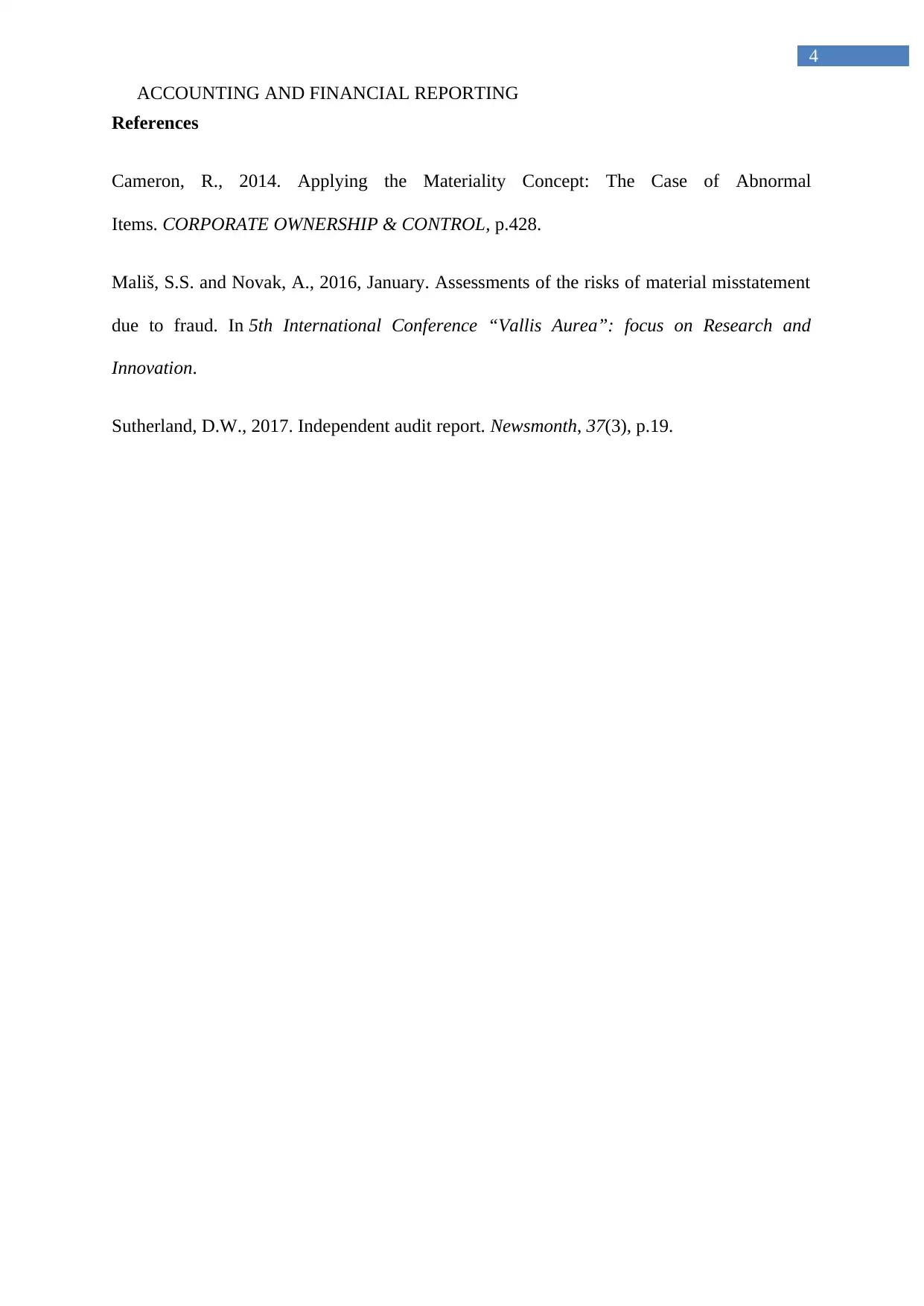Case Study: Ethical Issues in Financial Reporting at Brady Industrial
VerifiedAdded on 2019/10/31
|4
|674
|378
Case Study
AI Summary
This case study analyzes an ethical dilemma in financial reporting at Brady Industrial Products. The assistant accountant, Sharon Rock, identifies that the company's current ratio falls below the required level as per a loan agreement with Localtown Bank. The accountant, Tim O'Shea, decides to manipulate the financial data by misclassifying a non-current receivable as a current receivable to meet the terms of the loan agreement. The assignment explores the ethical issues involved, specifically highlighting the material misstatement of assets in the financial statements, which could influence the economic decisions of the loan provider. It emphasizes that the misrepresentation of financial information constitutes fraudulent financial reporting, violating the concept of materiality as defined by AASB 1031. The analysis also references APESB 110, which stresses the need for an independent review of financial statements. The document underscores the importance of ethical conduct in accounting and the potential consequences of manipulating financial data.
1 out of 4










![[object Object]](/_next/static/media/star-bottom.7253800d.svg)